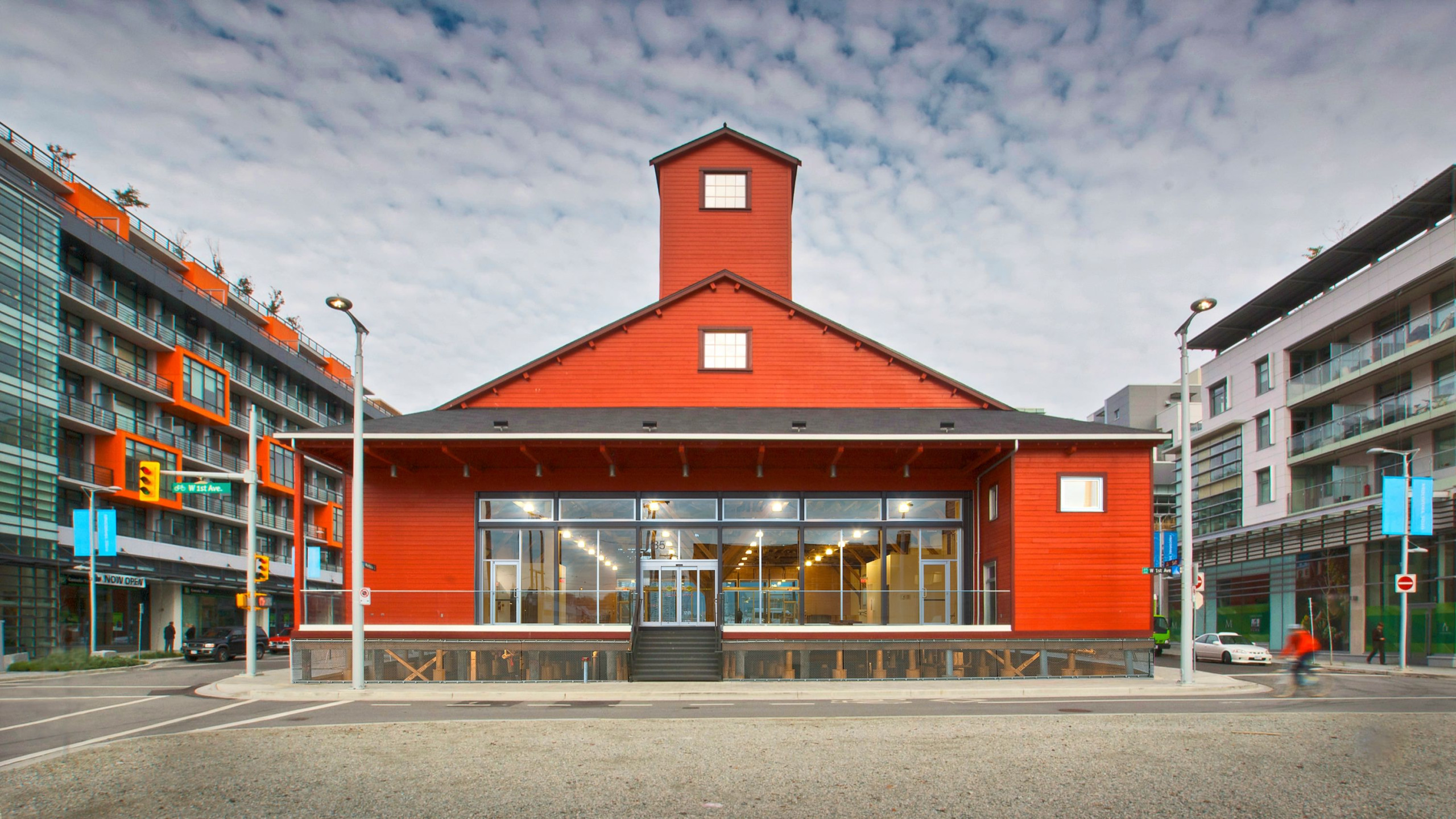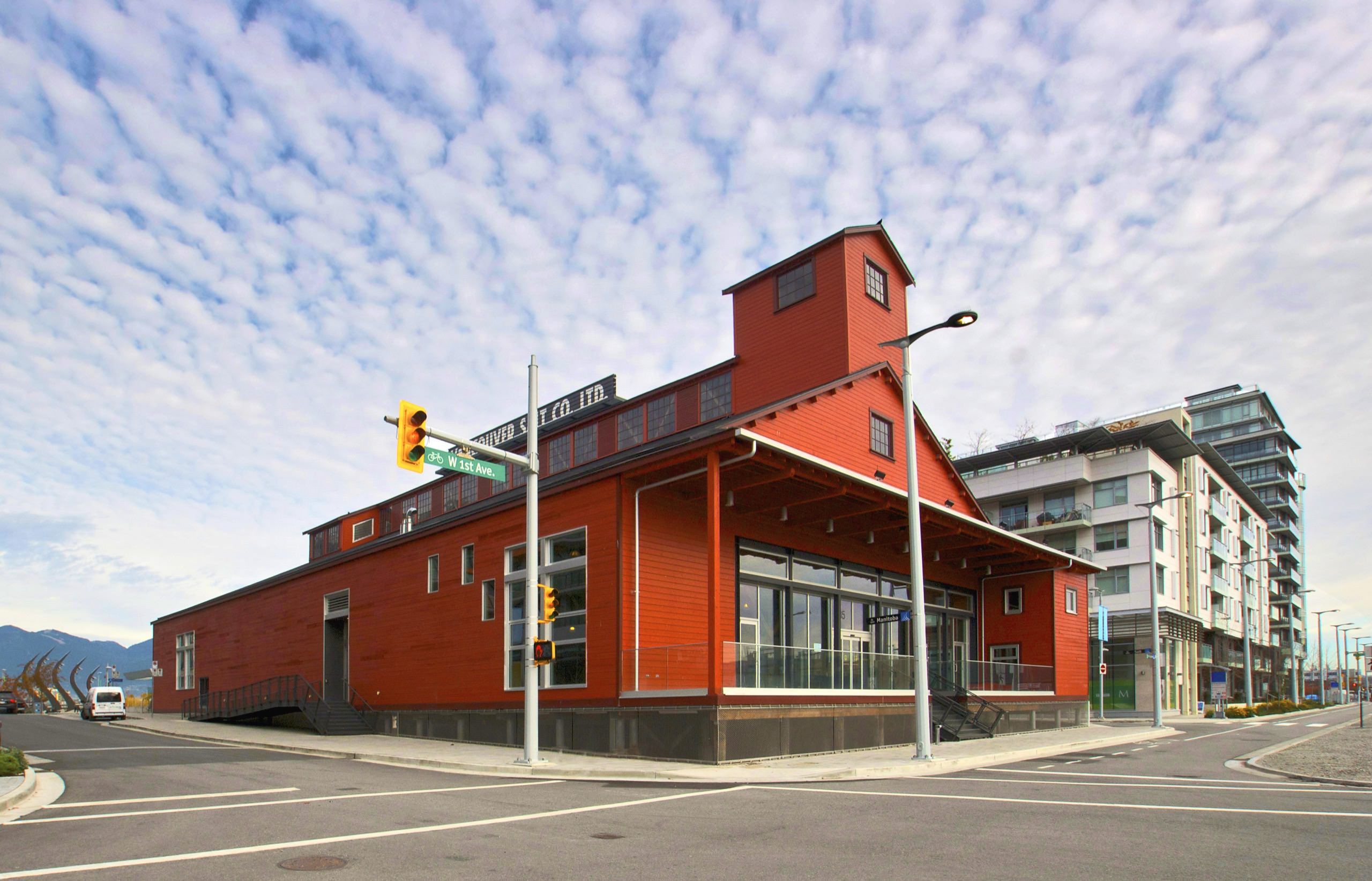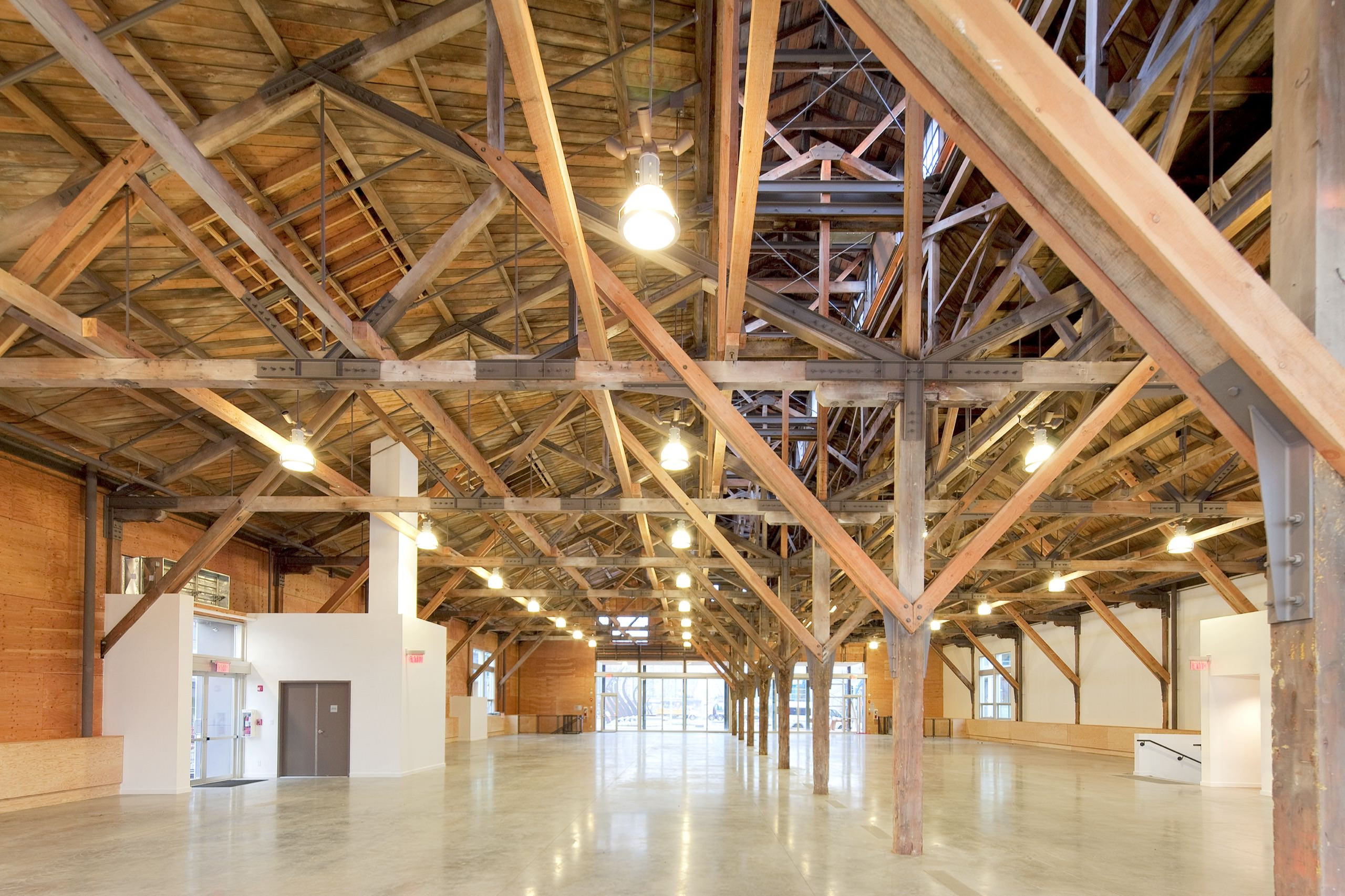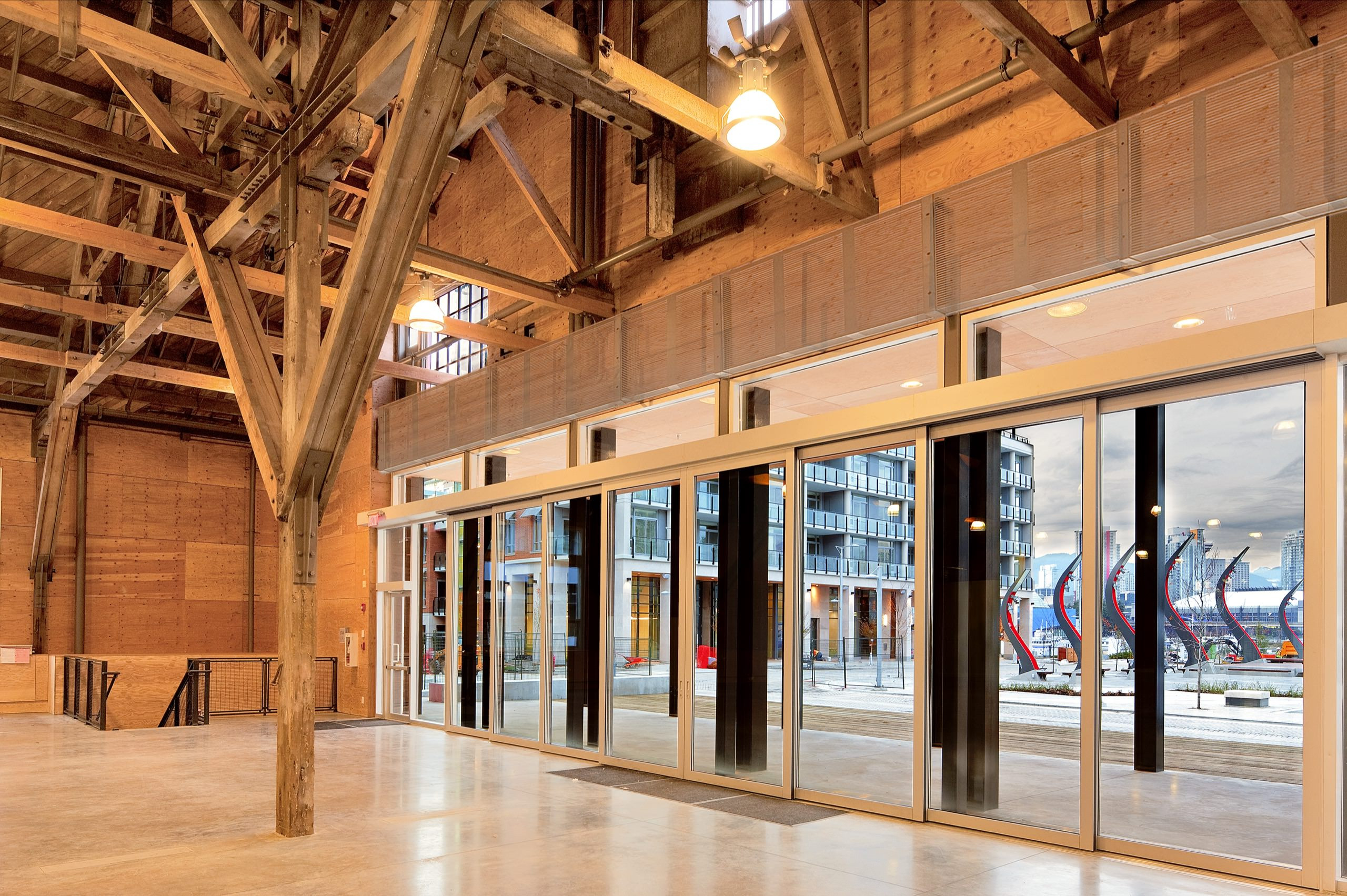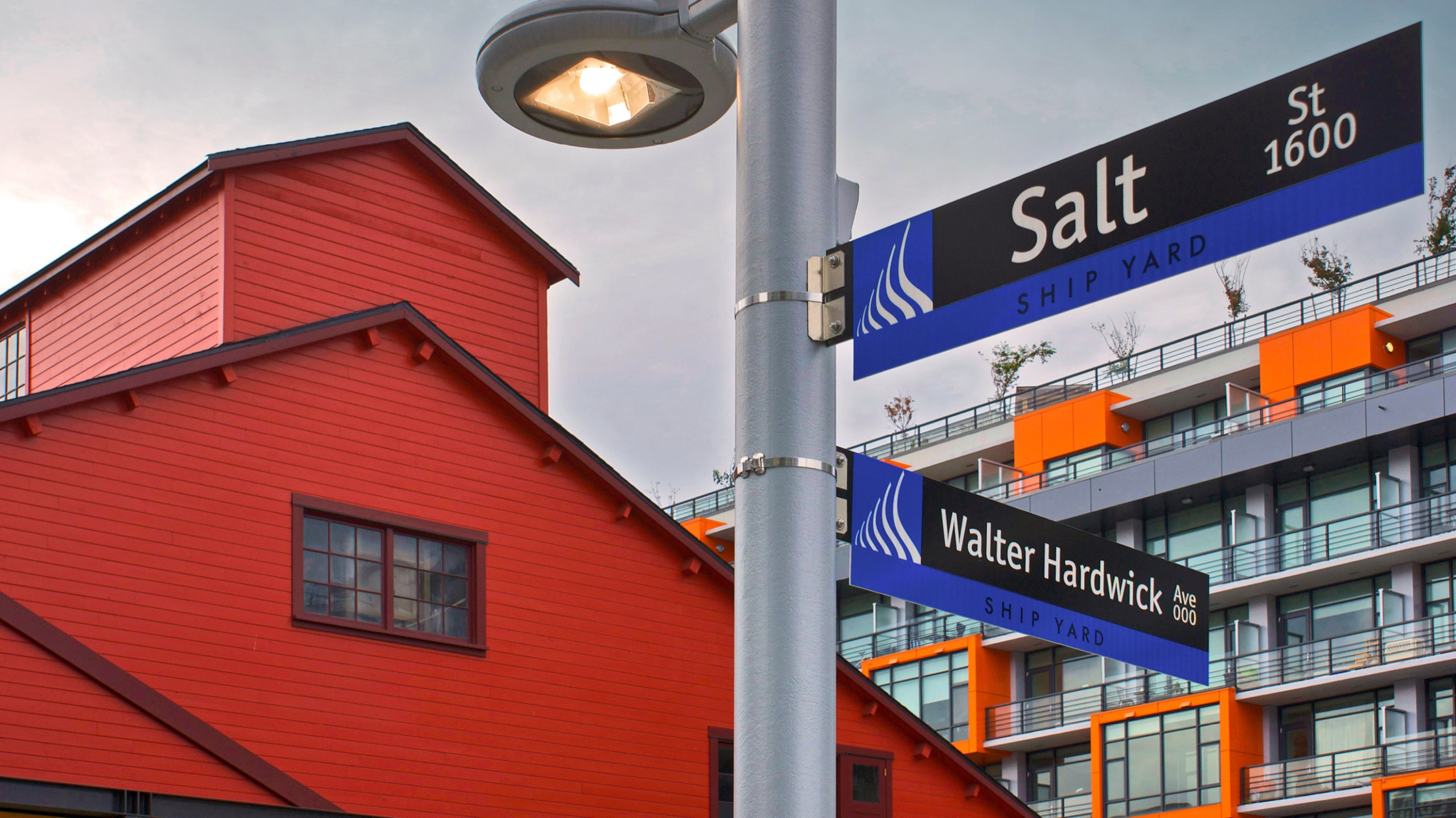The Salt Building harkens back to the rich industrial past of sawmills, shipbuilding and steel fabrication that made up Vancouver’s historic working waterfront. Constructed in the 1930s, the building was originally a refinery for salt shipped from San Francisco to Vancouver. The aim of the adaptive reuse was to create a social hub for athletes competing at the 2010 Winter Olympic Games that would continue to perform a similar function for the emerging Olympic Village residential neighbourhood. The building was raised with steel pile extensions to align with the new surrounding street system. The original building was completely restored—most notably the network of heavy timber trusses—and the historic ‘Vancouver Salt Co. Ltd.’ sign was reconstructed from archival photos.
Salt Building
Vancouver, BC
City of Vancouver
2009
1,300 sqm

main entrance
sustainability
LEED Gold
heritage restoration
heavy timber and wood construction
awards & recognition
2014
Heritage Canada National Trust Award
2011
City of Vancouver Heritage Honour Award
Canadian Wood Council Green Building Award
2010
Heritage BC Award of Honour
Canadian Institute of Planners Award
Canadian Association of Heritage Professionals Award
Vancouver Regional Construction Association Award
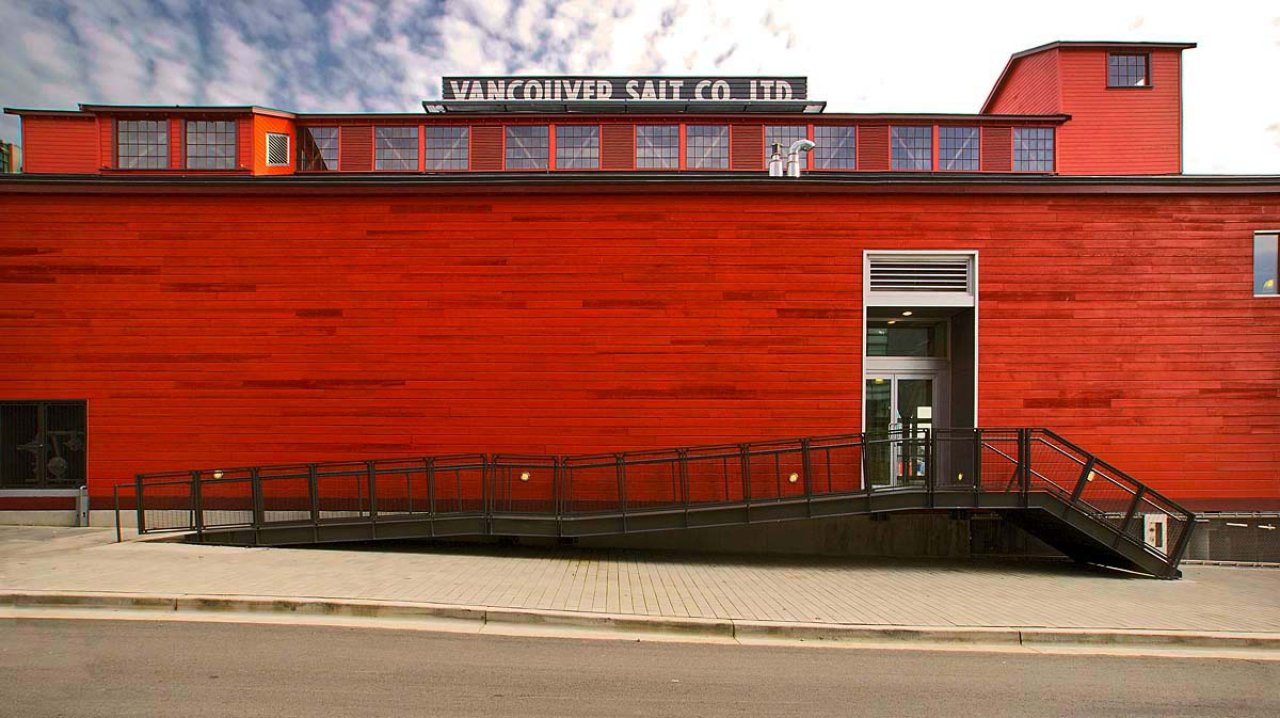
steel access ramp
The architects cleverly managed to maintain the spirit and historical significance of the original landmark while bringing new life not only into the building, but also into its surrounding community.
The Globe and Mail
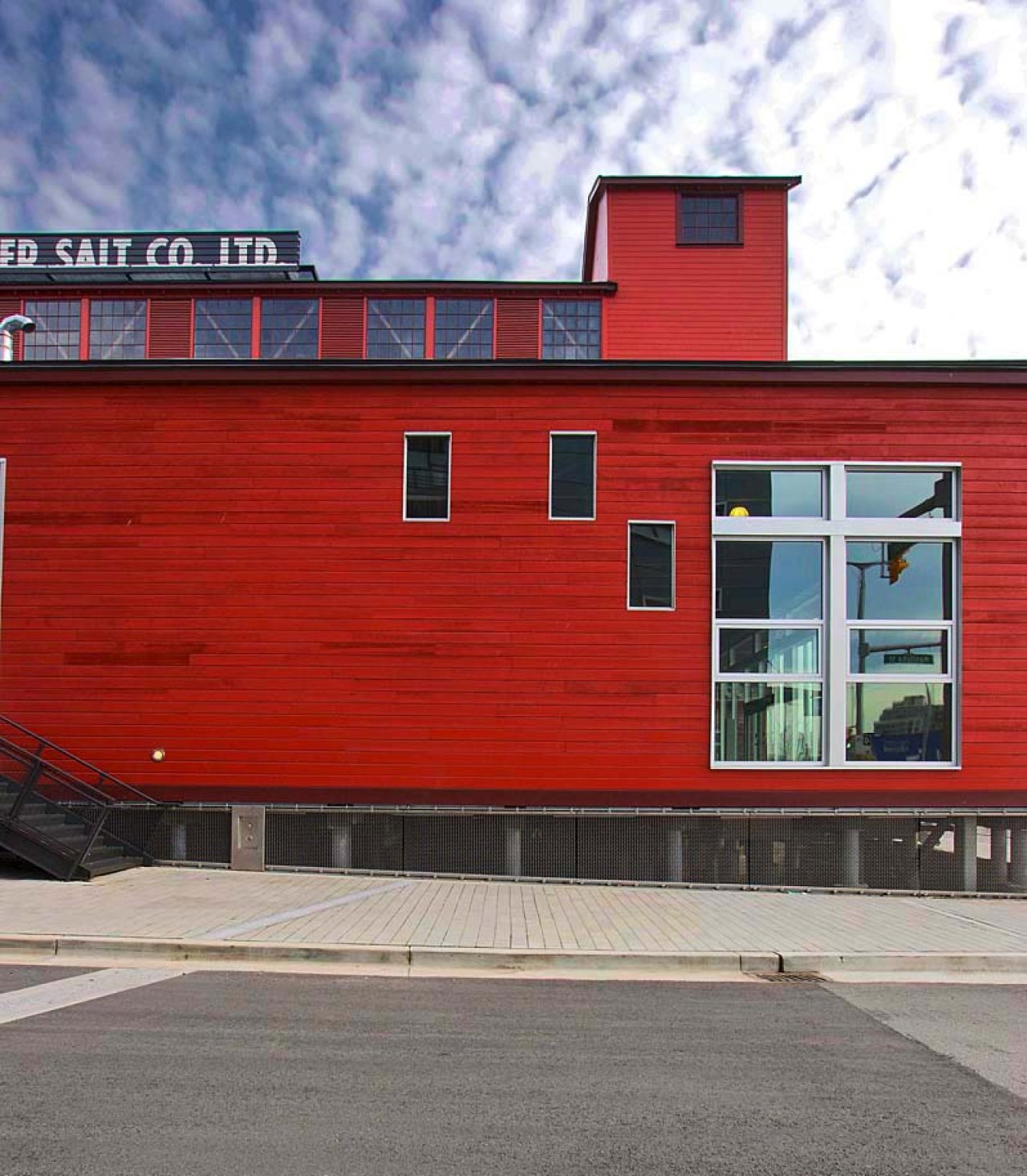
building raised on steel pile extensions
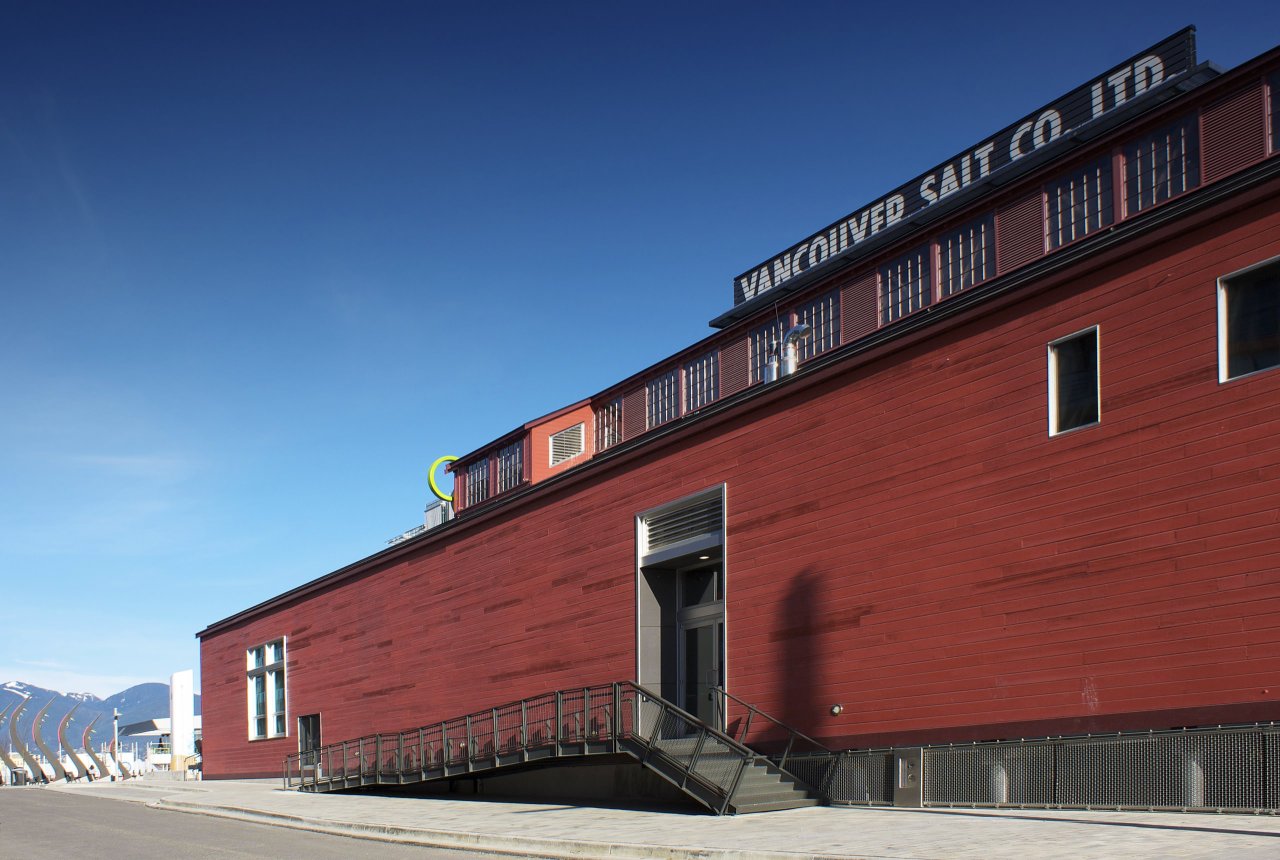
reconstructed sign
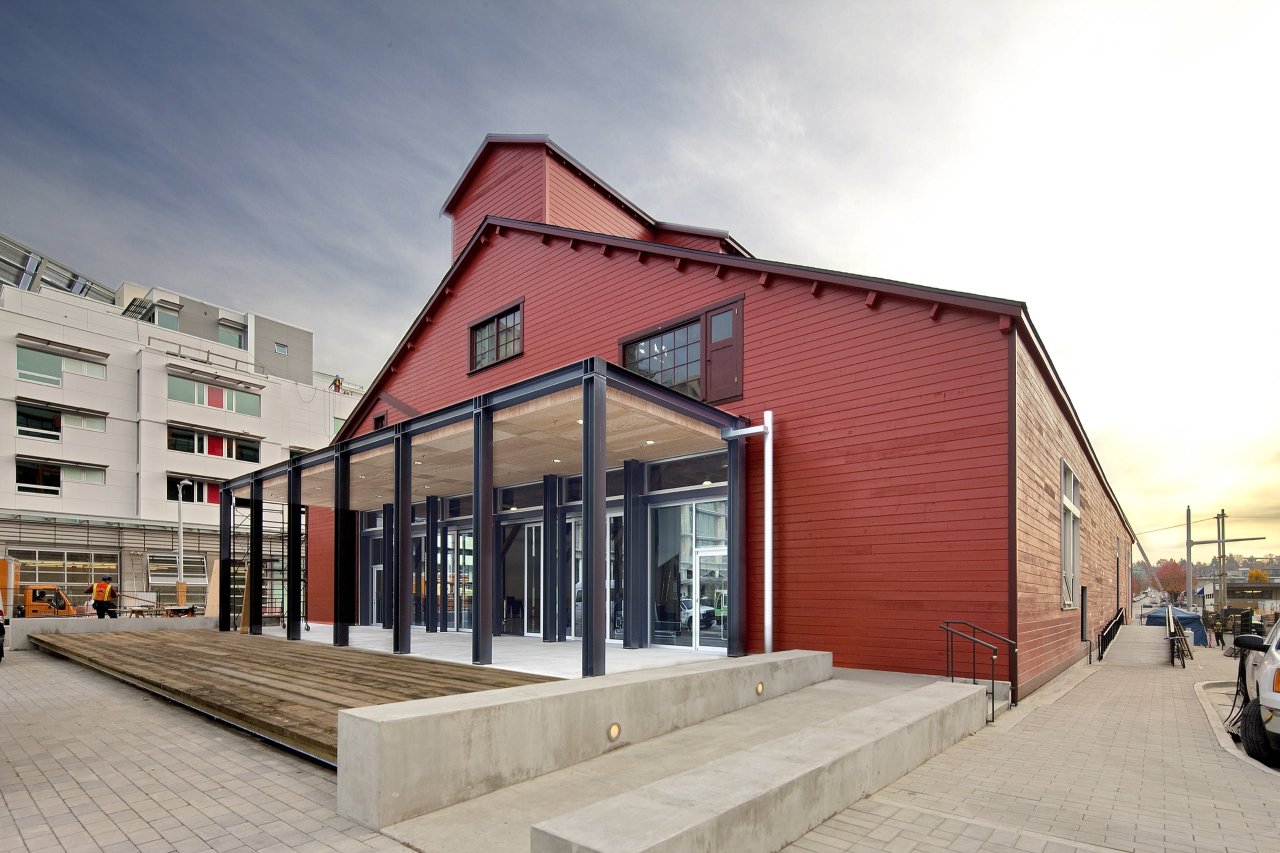
covered terrace
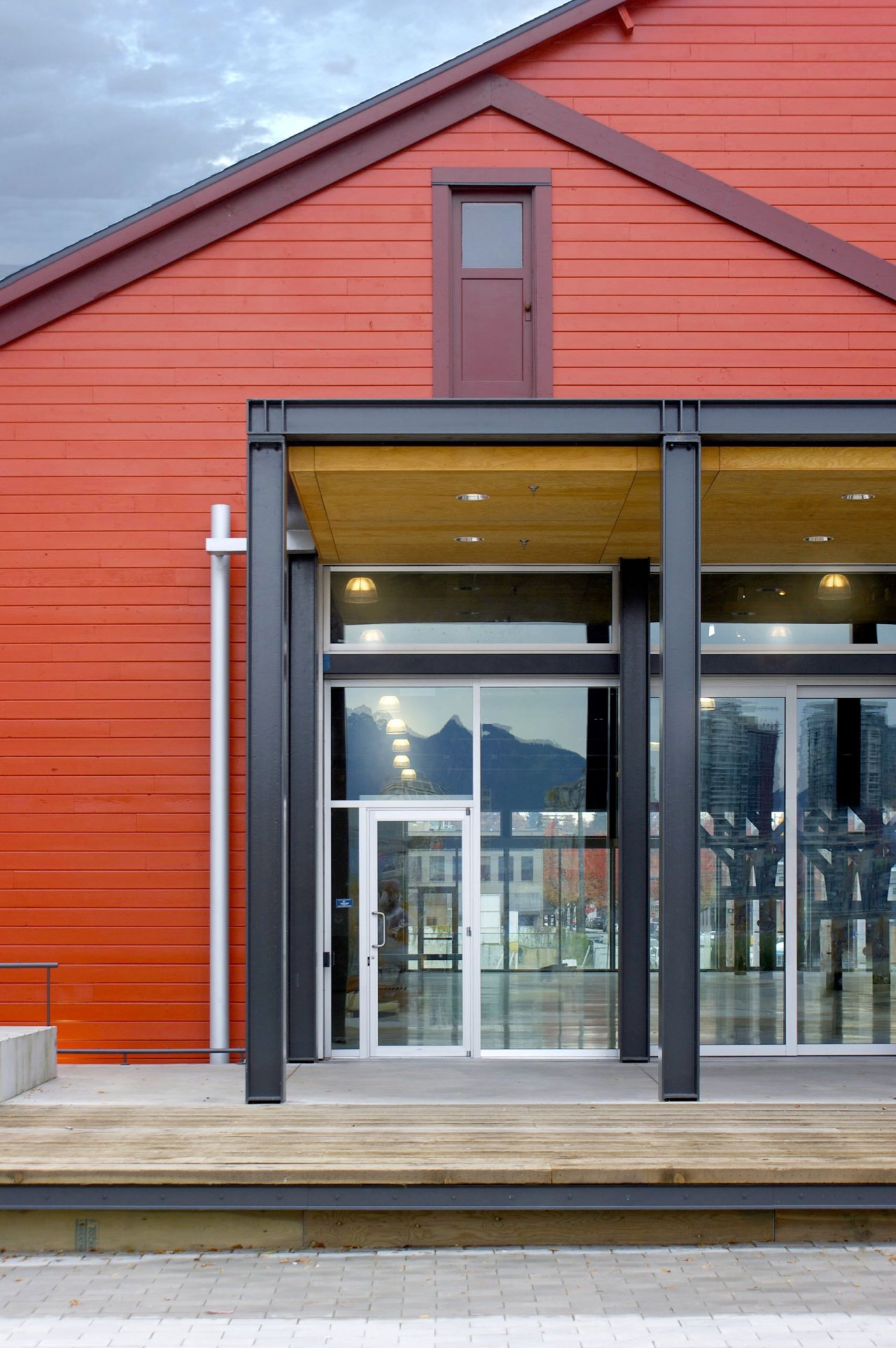
covered terrace
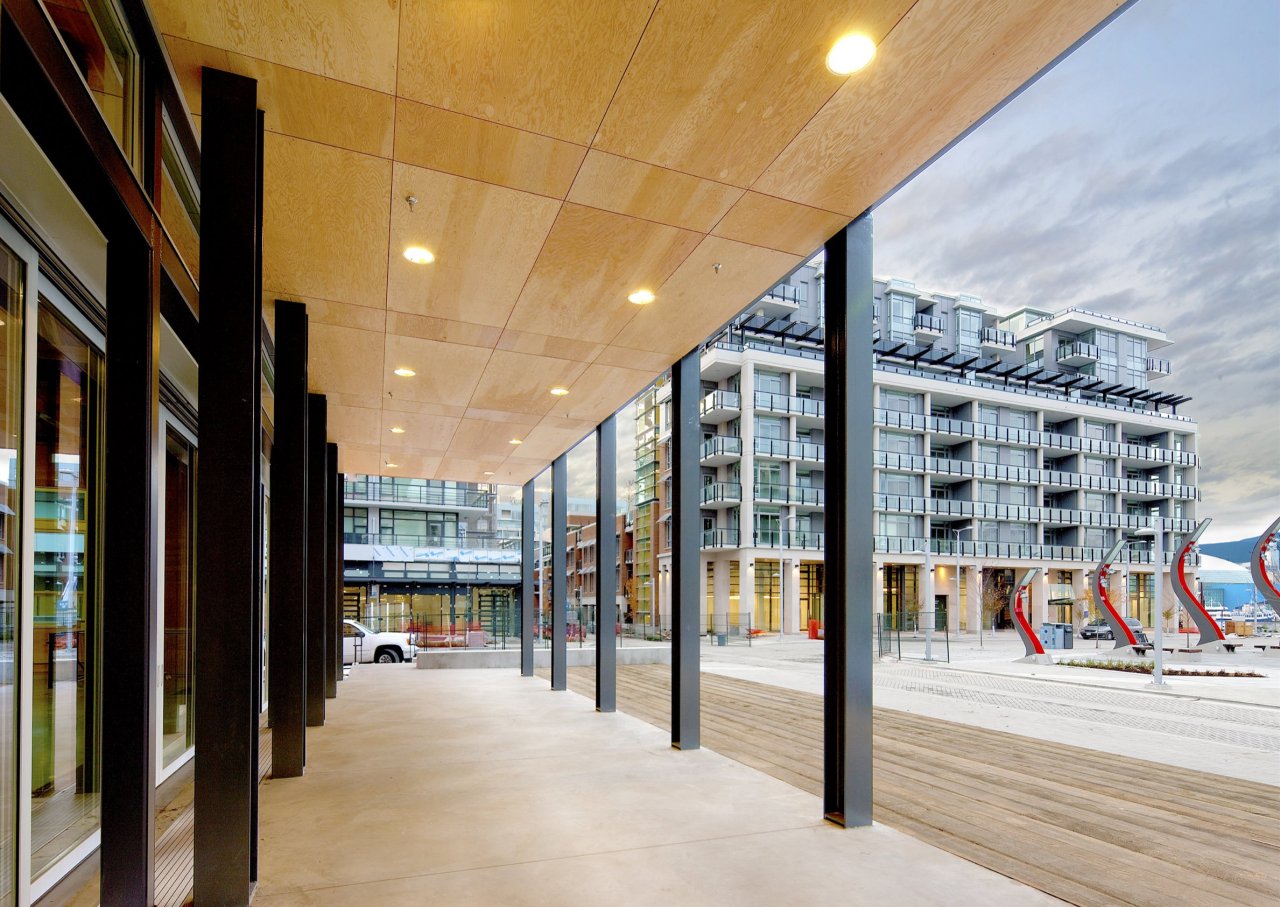
connection to plaza

plaza at dusk
sustainability
LEED Gold
heritage restoration
heavy timber and wood construction
awards & recognition
2014
Heritage Canada National Trust Award
2011
City of Vancouver Heritage Honour Award
Canadian Wood Council Green Building Award
2010
Heritage BC Award of Honour
Canadian Institute of Planners Award
Canadian Association of Heritage Professionals Award
Vancouver Regional Construction Association Award
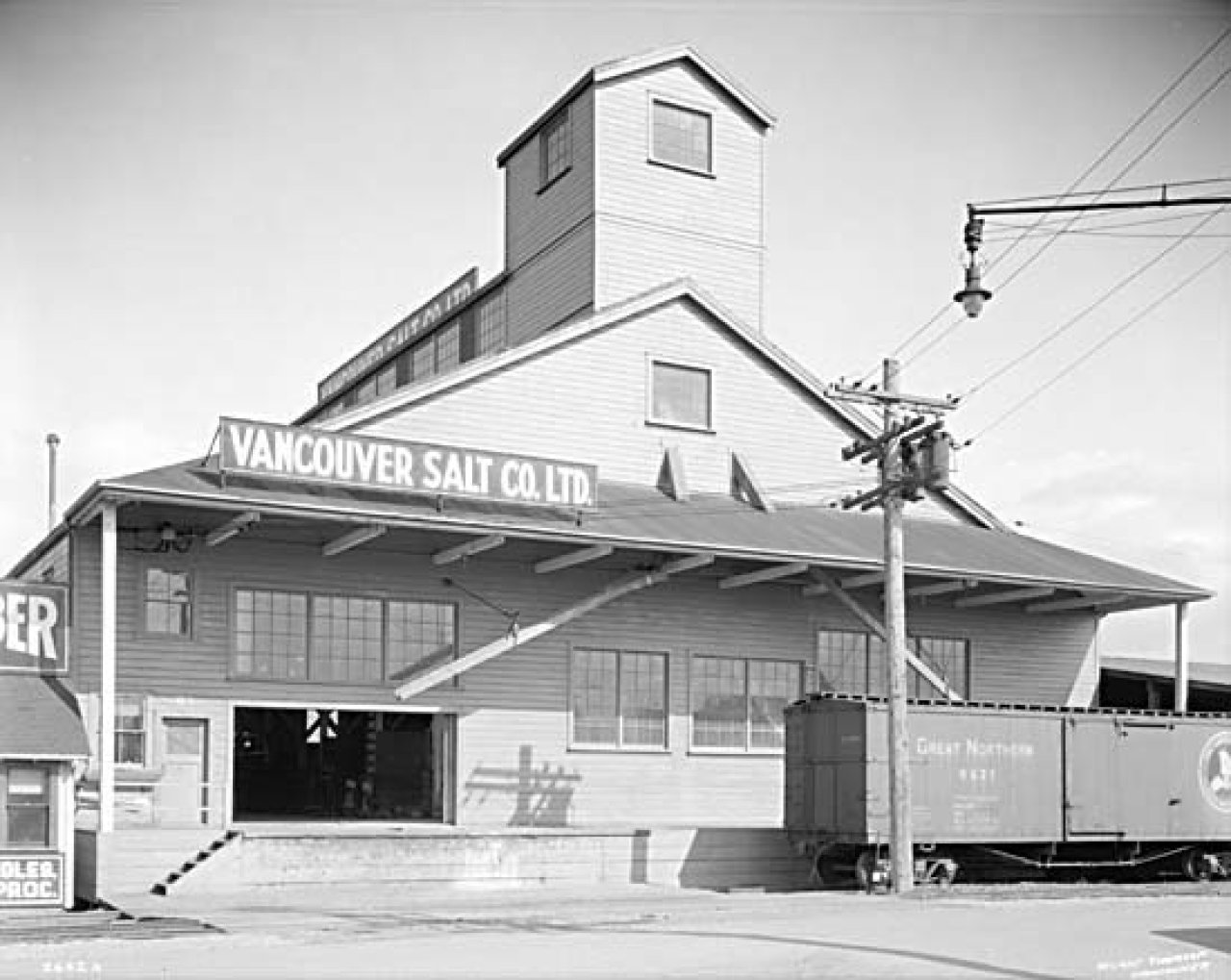
archival photo
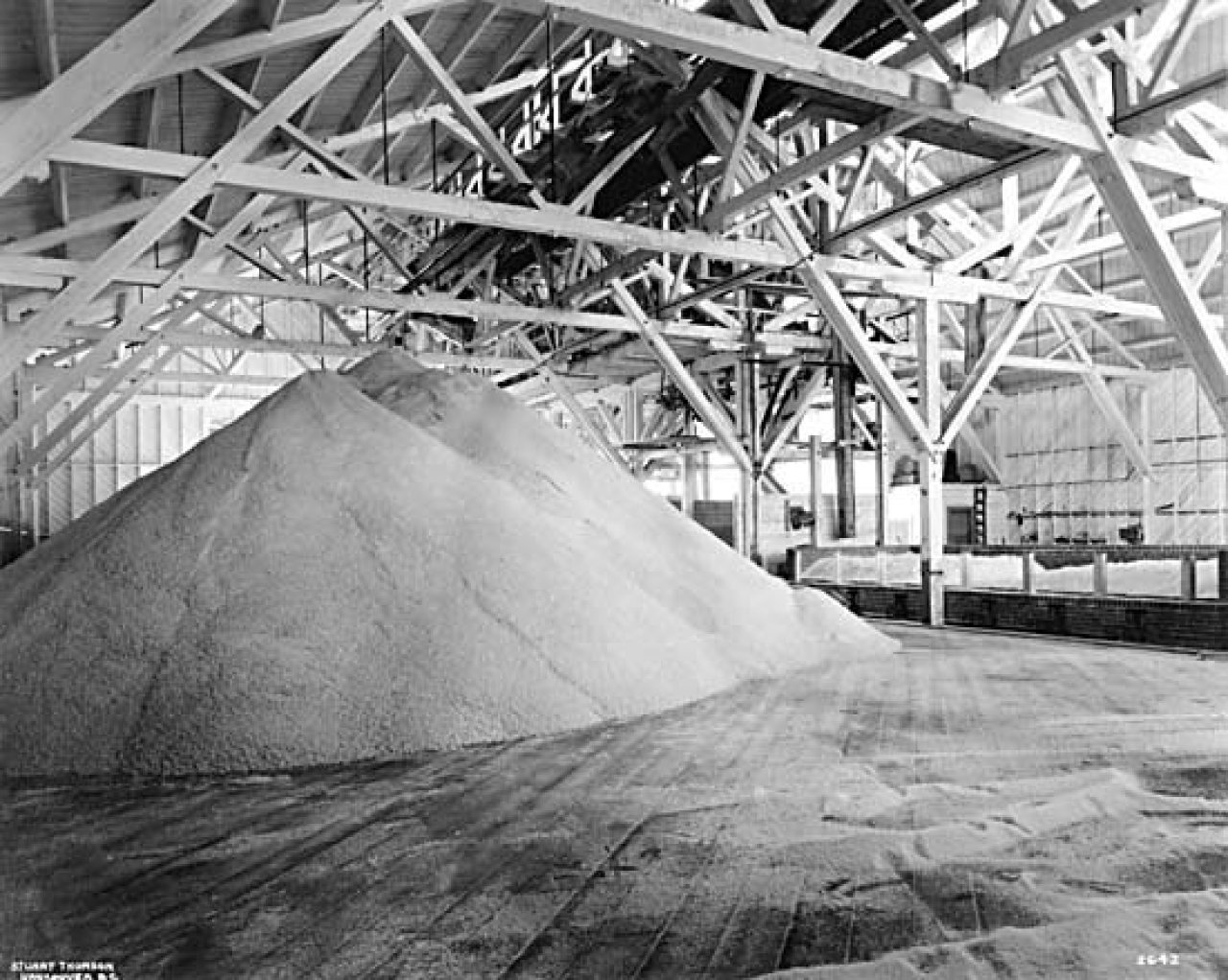
archival photo
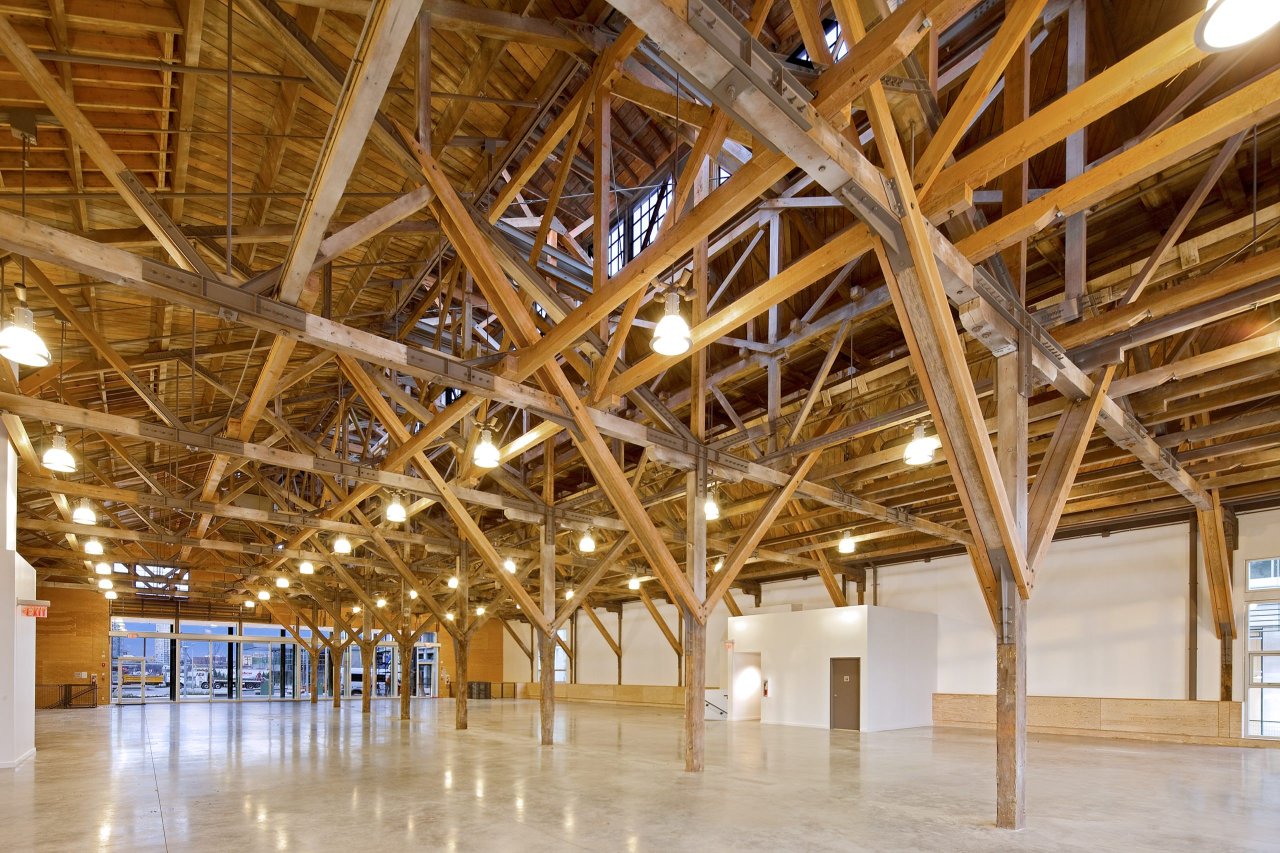
heavy timber trusses
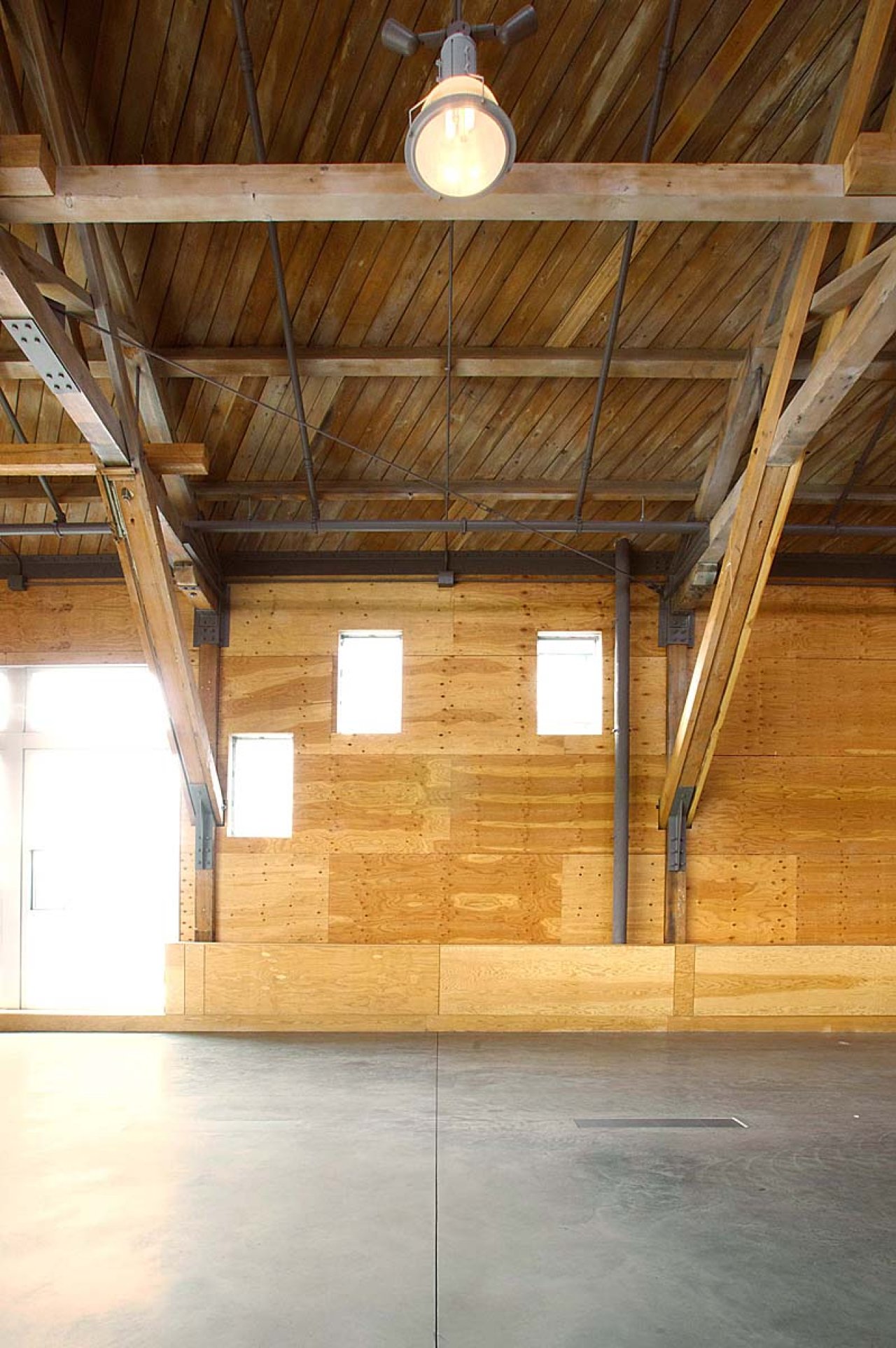
punched windows
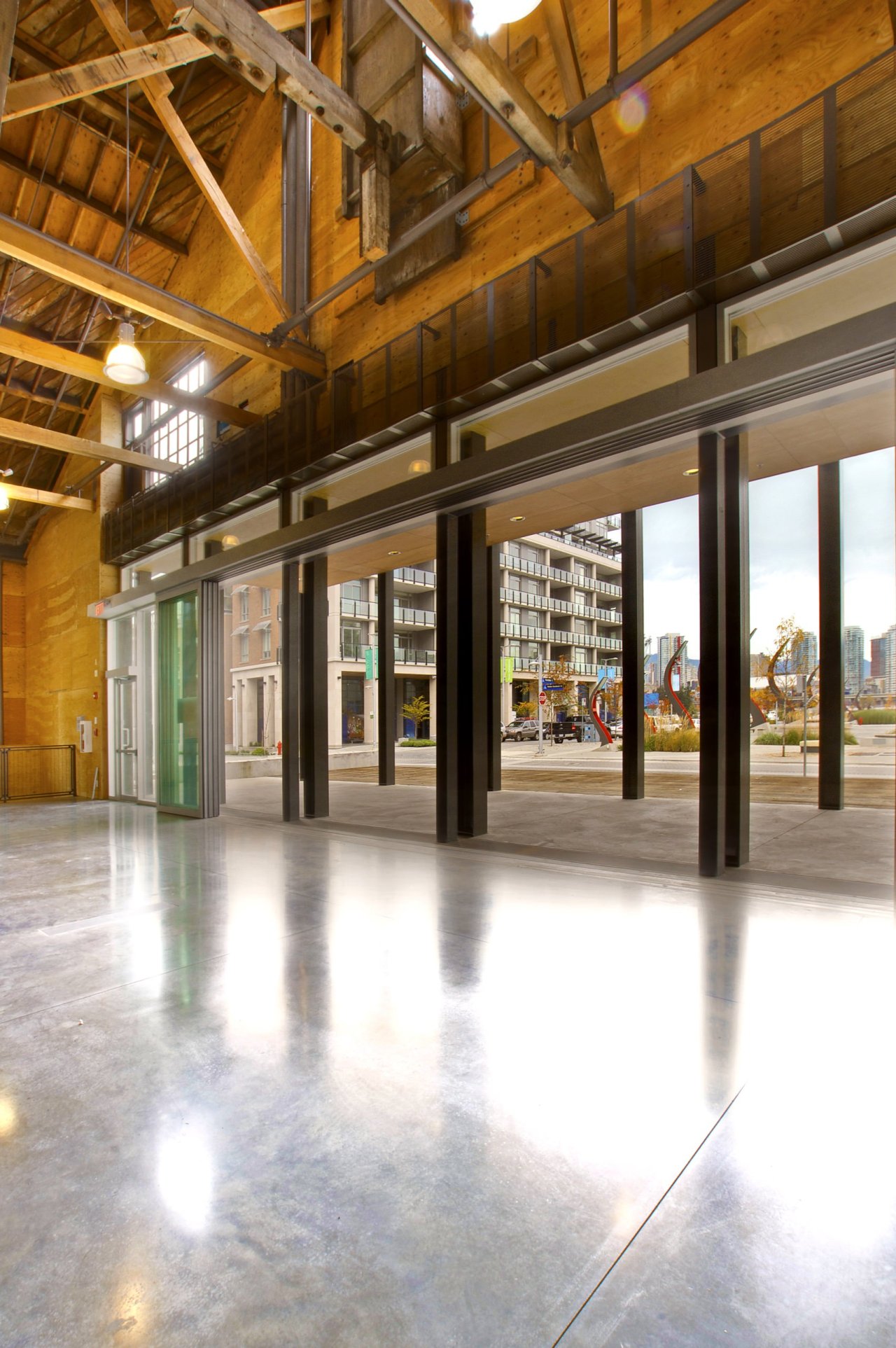
open to covered terrace
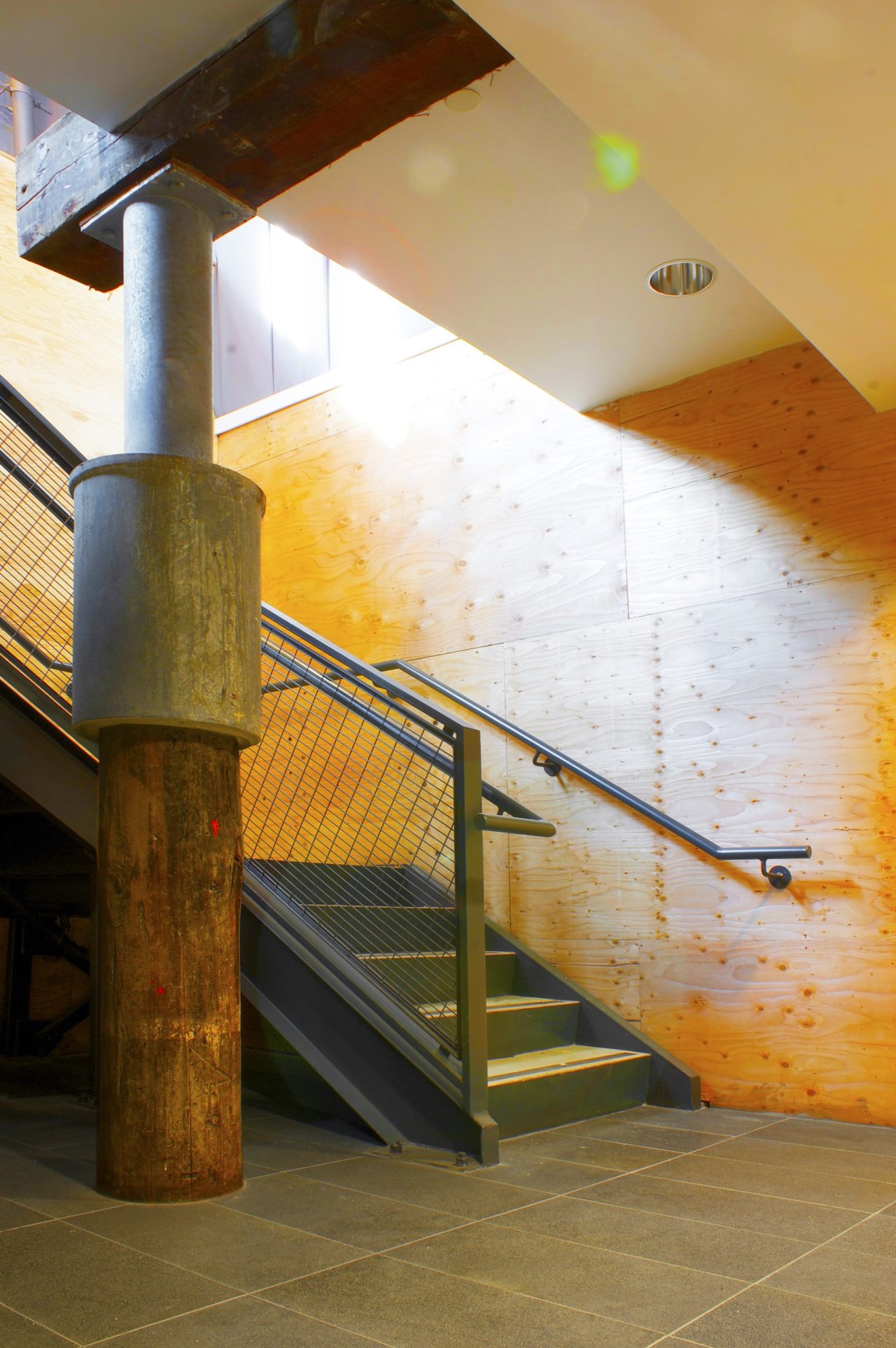
steel pile extension at interior
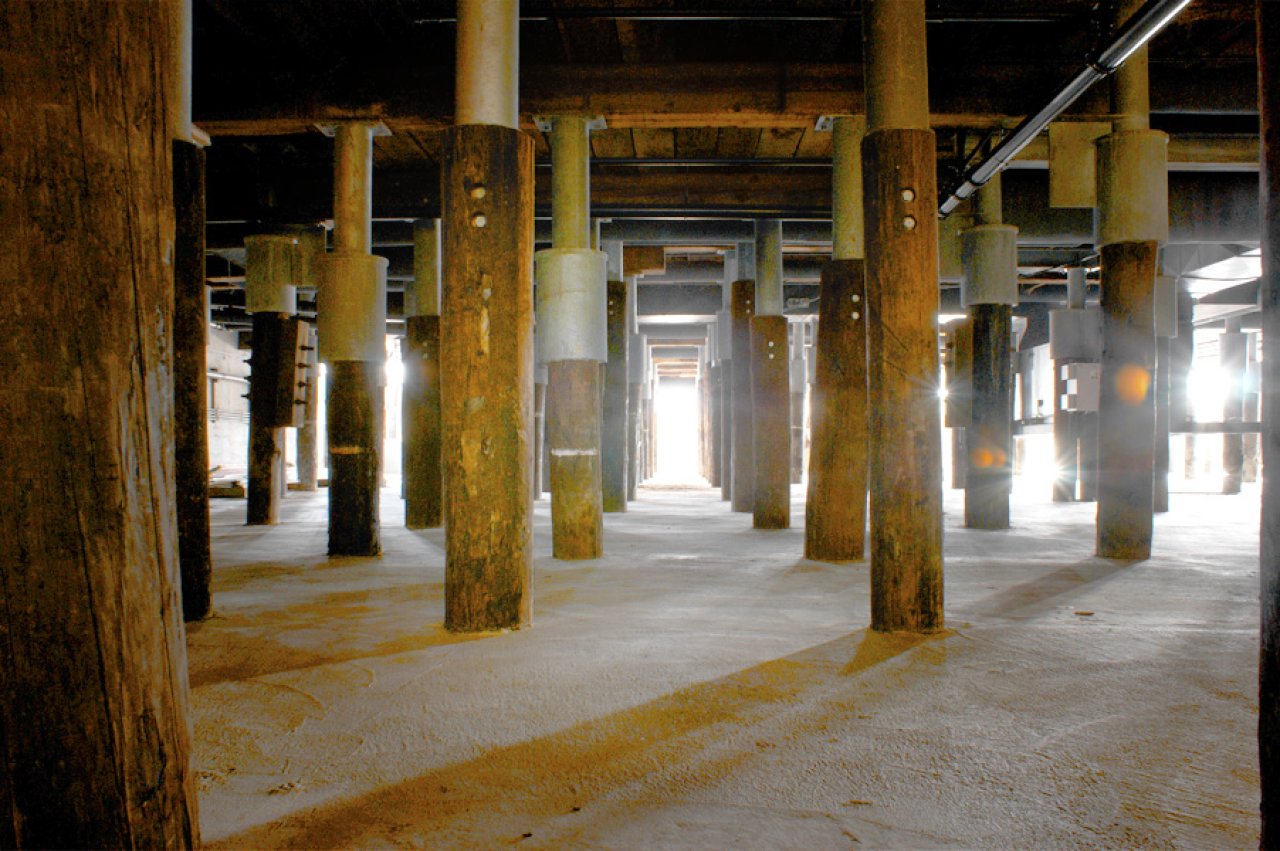
steel pile extensions beneath building
The 1930 Salt Building, painted a bold red, once refined raw salt before being converted in the 1980s into a paper-recycling plant. Now, its massive wooden timbers have been gracefully restored by Acton Ostry Architects.
The Globe and Mail
